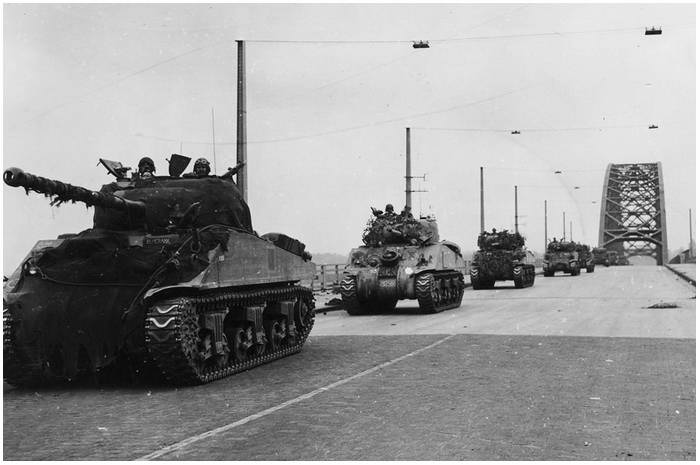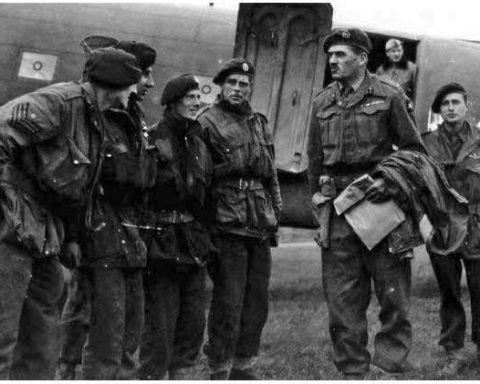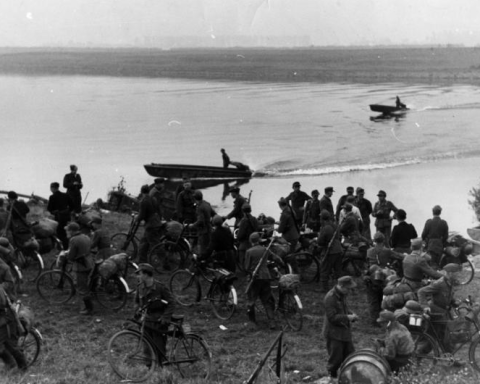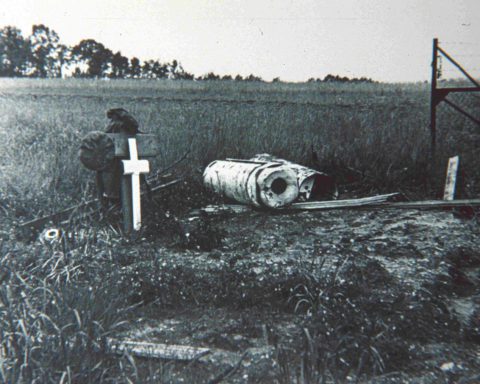Operation Market Garden culminated in the last Allied defeat of World War II. Many reasons were put forward after the Battle of Arnhem to explain the loss of the Battle of Arnhem.
Immediately after the Battle of Arnhem, the British army command blamed the Polish Parachute Brigade. If they had fought harder, Operation Market Garden would have been successful, they claimed. General Boy Browning in particular, who himself played a significant role in Market Garden’s failure, has done a lot to put blame on the Poles.
The Poles have now received the rehabilitation to which they are entitled. Today, no one designates the Poles as a scapegoat for the Allied defeat. But what are the causes of Market Garden’s failure? We name them all, for readability in two parts.
1. Bad plan
The main reason first. To quote British historian Antony Beevor, “Operation Market Garden was simply a very bad plan from the start. Any other problem originated there. Montgomery had shown no interest whatsoever in the practical problems surrounding airborne operations.”
The plan was put together hastily in a week. Standard preparations for a major military operation, such as an investigation of the site in the Netherlands, were not made. Had that been done, the British would have discovered that Fliegerhorst Deelen, north of Arnhem, had been largely evacuated by the Germans. The British could have landed there undisturbed and although the airfield was heavily damaged, it could have been used as the basis for the operation around Arnhem.
Unrealistic plans were made when drawing up Market Garden. In the original plans, the transport planes would tow two gliders. The entire British Airborne Division would be brought to Arnhem in one lift.
The planners discovered just two days before the start of Market Garden that the Dakota transport aircrafts could only tow one glider. Considering the distance between England and Arnhem, the planes had too little fuel for two gliders.
The transport of the Airborne Division and transport of the Polish Brigade was therefore spread over three days.
2. Airborne landings in three days
The fact that the airborne landings at Arnhem took place over three days is the second reason Market Garden failed. Because the British chose to land only part of the British Airborne Division near Arnhem on the first day, the drop zones and landing areas near Wolfheze had to be occupied for the airborne landings in the days after the landings on the first day.
As a result, on Sunday, September 17, only three battalions with a total of approximately 2,500 airborne soldiers were available to advance to Arnhem. With a full division of 12,000 men, the chances of success would have been much better.
The German Wehrmacht conducted an extensive study after the Battle of Arnhem. They mostly studied the mistakes made by the British. According to the Germans, the decision to land the entire 101st Airborne Division in Brabant, but in Arnhem only part of the British Airborne Division was Montgomery’s biggest stupidity.
If the Germans had executed the plan, they would have turned it around. The 101st Airborne Division, which would be dropped closest to the ground troops and thus relieved the fastest, would have been dropped in multiple lifts by the Germans.
In the German version of Market Garden, the British Airborne Division would land in its entirety near Arnhem. The British airbornes were farthest away from the ground forces and should last the longest before being relieved.
3. Too far from Arnhem
The landing areas and drop zones for the British Airborne Division were located west of Wolfheze: more than 9 miles from Arnhem. The biggest weapon of airborne troops is the element of surprise. Because the British were dropped so far away from Arnhem, the Germans had time to stop the British advance to Arnhem by immediately erecting a Blockade between the British landing areas and the bridges at Arnhem.
What was not very helpful during the advance to Arnhem is that the British maintained their tradition: 50 minutes of marching, 10 minutes break for a cup of tea.
General Urquhart of the British Airbornes made several attempts in the days before the operation to ensure drop zones closer to Arnhem for at least some of the troops. He preferred a coup de main, in which some of the paratroopers would almost land on the Rhine Bridge.
According to the RAF, this was not possible, due to the large amounts of anti-aircraft guns around the bridge and around Deelen airfield. The RAF’s transport aircraft would have to fly almost over Deelen airport if they were to drop British paratroopers at the bridge.
A glider landing in the floodplains around the bridge was also rejected. The gliders would tip over in the muddy floodplains. Afterwards it turned out that the gliders could have landed here very well.
4. Underestimation
In early August 1944, the Allies broke out in the bridgehead of Normandy. In a month the Allies wiped all of France and chased the fleeing German troops to the border with the Netherlands. The German retreat was a sign that the German army had collapsed. The Allies thought.
Due to the lack of fuel because of the long supply lines, the Allied advance had to be stopped in early September 1944. When drawing up the plans for Market Garden, Montgomery assumed that the German army was as good as defeated. This turned out to be not even close to the truth.
In early September, Field Marshal Walter Model was ordered by Hitler to restore the German line in the Netherlands. Model, known for his improvisational talent, had restored discipline within the troops under his command in two weeks.
He himself had his headquarters in Oosterbeek, in hotel De Tafelberg. Behind three major rivers, 110 kilometers behind the front, he was safe from any Allied airborne landings.
“We would defeat the airborne troops before the ground forces would be able to relieve them,” he told General Rauter a few days before Market Garden. Prophetic words…
After the first airborne landings, the Germans reacted very quickly. Just as the Polish General Sosabowski had predicted prior to Market Garden, it turned out that the Germans were far from defeated.
5. Wishful thinking
An important reason for the failure of Operation Market Garden is also the wishful thinking of the British planners. By mid-September, there had been a lot of signals from the British that the German army in the Netherlands was already in good order. Nevertheless, the planners continued to claim that the German soldiers to be dealt with consisted of ‘children and old men’.
Information that the British did not like was discarded. The Dutch resistance had reported that two SS Panzer Divisions were located north of Arnhem: the 9th SS Panzer Division Hohenstaufen and the 10th Panzer Division Frundsberg. The British ruled that this could not be true. Both armored divisions had been completely destroyed in the Falaise Pocket in France in August, according to the British.
Both SS divisions had suffered serious blows in France, with the divisions losing almost all their tanks, but the divisions were by no means destroyed. They consisted of more than 7,000 experienced SS soldiers. The divisions had been sent to the Netherlands to rest and to be re-armed.
Other information that the British did not like was simply ignored. As commander of the Dutch armed forces, Prince Bernhard had warned that it was unwise to use armored vehicles on the Dutch dikes, through the flat Dutch polder land. The tanks were an easy target for anti-tank guns. Montgomery refused to listen to that.
On Thursday morning, September 20, 47 Sherman tanks from the Guards Division left from Nijmegen to Arnhem, via a high road. Within a few hundred meters, the first five tanks were on fire. The attack was stopped immediately and Arnhem was never reached.
Continue reading: Where did it go wrong? (Part 2)




